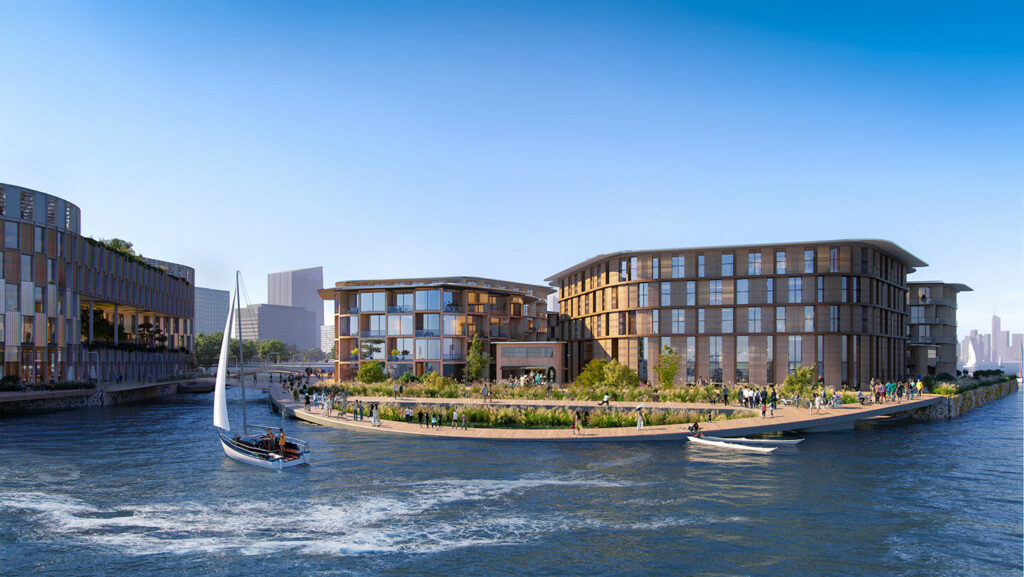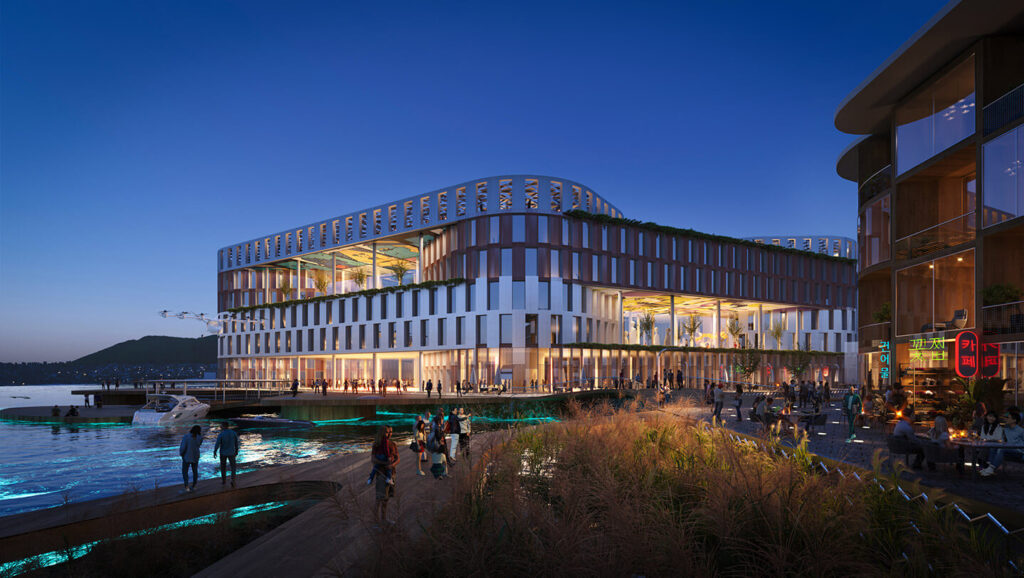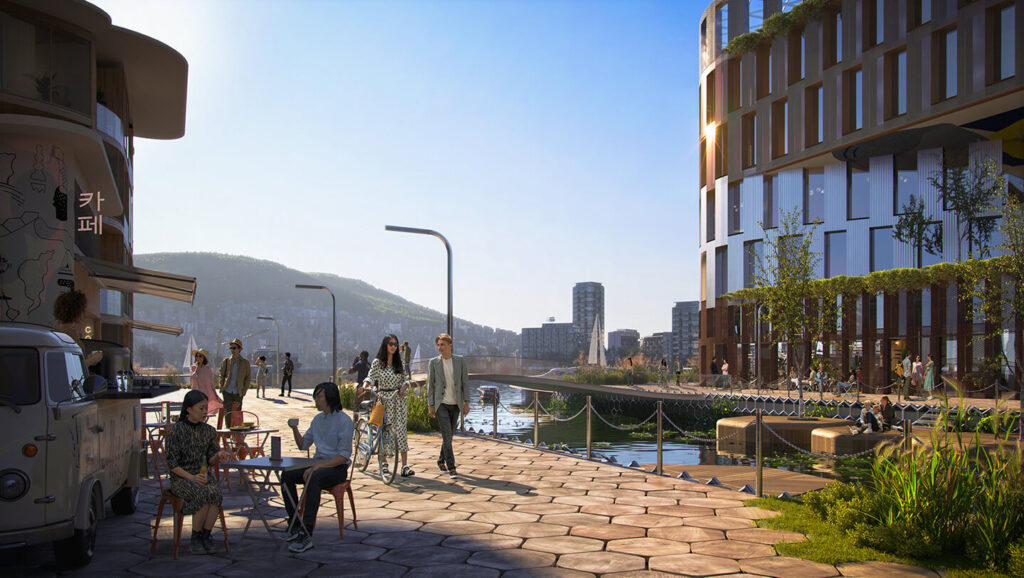Indeed, the concept of floating cities represents an exciting and futuristic trend in architecture and urban planning. As technology continues to advance, architects and designers are exploring innovative ways to address the challenges posed by climate change and rising sea levels. Floating cities offer a compelling vision of a sustainable and resilient future where human settlements can thrive on water.
So, when will the first floating city be built?
Answer: It’s already under construction.
Oceanix Busan is a visionary project that aims to seamlessly blend land and water, creating a unique and vibrant community. By connecting floating platforms to the shore with link-span bridges, it creates an idyllic setting where one can enjoy recreational activities, art exhibitions, and captivating performances in the sheltered blue lagoon.

The architecture of Oceanix Busan is characterized by low-rise buildings with soft lines and spacious terraces that encourage indoor-outdoor living. These design elements not only enhance the visual appeal but also foster a sense of community connectivity.
What makes Oceanix Busan truly remarkable is its adaptive nature. The plan is to allow the community to organically transform over time, ensuring it meets the evolving needs of Busan. Starting with 12,000 residents and visitors, this innovative project has immense potential to accommodate over 100,000 people in the future.
The $200 million plan is slated for completion in 2025.
Will this concept redefine urban living?

These floating city prototypes offer several advantages and sustainable features:
Protection from Sea-Level Rise: Coastal cities are at risk from sea-level rise, and floating cities provide a way for vulnerable communities to adapt to these changes. They are designed to remain afloat even as sea levels rise.
Sustainability: These cities are designed with sustainability in mind. They incorporate integrated systems for energy, food production, water management, waste reduction, mobility, and coastal habitat regeneration. This holistic approach minimizes resource consumption and waste.

Renewable Energy: Floating cities often rely on renewable energy sources, such as photovoltaic panels, to generate power. In the case of OCEANIX Busan, 100% of the operational energy needs are planned to be met through photovoltaic panels.
Local Resource Management: Each neighborhood in these cities is equipped to manage its own resources, including water treatment, recycling, and food production. This reduces the reliance on external resources and promotes self-sufficiency.
Flexibility: Some floating city designs, like the Floating Office Rotterdam, have the ability to move as water levels rise. This adaptability ensures long-term viability in the face of changing environmental conditions.
Large-Scale Capacity: Projects like OCEANIX Busan aim to accommodate large populations, potentially housing tens of thousands of people. This addresses the pressing need for housing solutions in coastal areas.
Urban Farming: Incorporating urban farming areas can help provide residents with locally sourced, sustainable food options, reducing the need for long-distance food transportation.
Inclusivity and Equitability: As highlighted by UN-Habitat’s Executive Director, Maimunah Mohd Sharif, inclusivity and equity are important considerations in these projects, aiming to provide safe homes for vulnerable coastal communities.
While floating cities offer a promising solution to some of the challenges posed by climate change, it’s important to note that they are just one part of a broader strategy to address the impacts of climate change on coastal communities.
Urgent action is indeed needed to mitigate and adapt to climate change, protect vulnerable populations, and safeguard coastal ecosystems. Projects like these represent innovative steps toward a more resilient future, but a comprehensive approach that includes reducing greenhouse gas emissions and protecting natural coastal defenses is essential.

